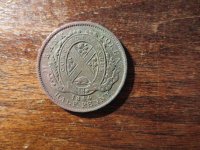Old Bookaroo
Silver Member
- Dec 4, 2008
- 4,318
- 3,510
I found this in a turn of the century (19[SUP]th[/SUP] to 20[SUP]th[/SUP]) book about prospecting and mining. The author suggests a troop of “Buffalo” (Negro) solders (I’m assuming they were cavalry – they well may have been infantry) found and then lost the Lost Adams Diggings.
Unfortunately, the author uses the “n-word” to name the lost placer. After the turn of the 20[SUP]th[/SUP] to the 21[SUP]st[/SUP] century I think we can do better than that.
What I found particularly interesting is the mention of the “saddle tree.” This is new to me – can anyone else shed some light on Mr. Frazier’s reference?
“…a fabulously rich hill of gold was found by a company of negro soldiers while pursuing a marauding band of Chief Nana's Apaches in the Black range country. This country was one vast wilderness of quaking asp, rising and falling with the roll of the land like the dark green billows of a stormtossed ocean. The Black range was more than wild —it was full of small bands of murderous Apaches, to whom it was but amusement to fight the ‘buffalo’ soldiers. During the fake skirmishes back and forth on one occasion, the pursuing soldiers lost their bearings in an impenetrable growth of cottonwood in a broken, rolling country, and were forced to camp. The landscape consisted of a series of long rides, flat peaks, and a broad scope of high levels. The greatest similarity of topography—and forest and foliage existed everywhere.
…
“It was somewhere on the west side of the Black range, among the numerous tributaries of the Animas, Arroyo Seco and Palomas, which all head in McKnight canon. A squad of soldiers while scouting to the east, down the Animas, found the hill of gold which has since caused such a furor.”
This is the line that presents something new (at least to me). Describing a later hunt for the Buffalo Soldiers’ Gold, Frazier mentions that a man named Hurste couldn’t find a tree he had previously marked with recovered gold.
“Like the famous saddle tree of the Adams diggings it would not materialize.”
Has anyone read about the “famous saddle tree of the Adams diggings?”
From Secrets of the rocks… by S.M. [Samuel Mulligan] Frazier
Second Edition, Revised (Denver, Colorado: Hall & Williams, Publishers) 1907








